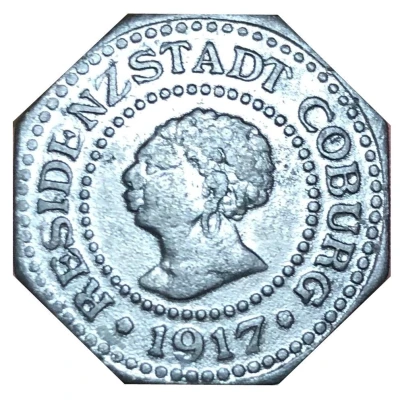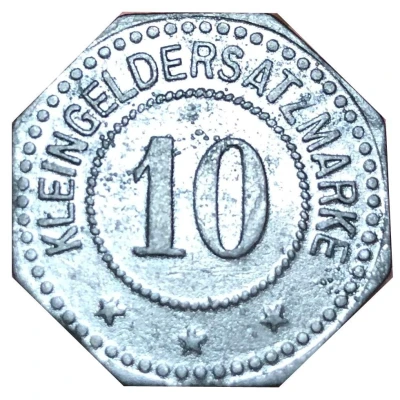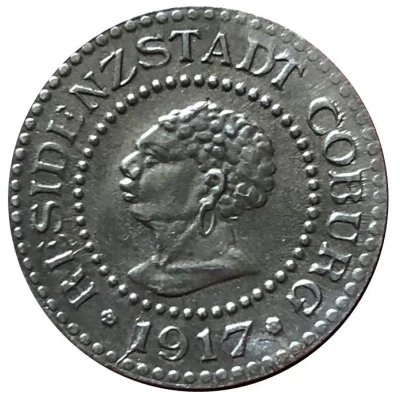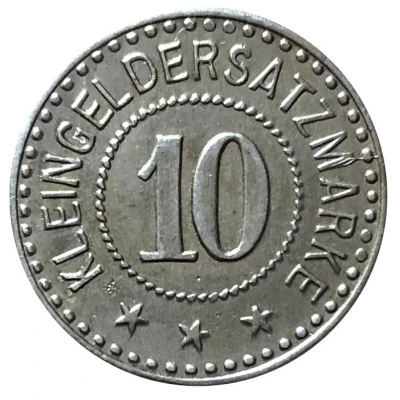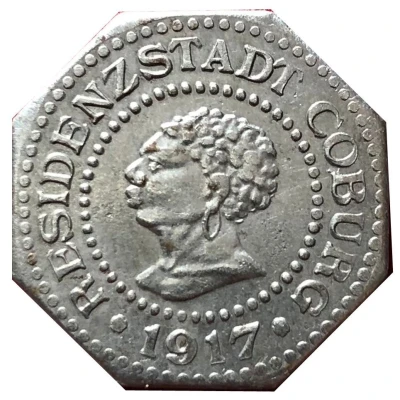
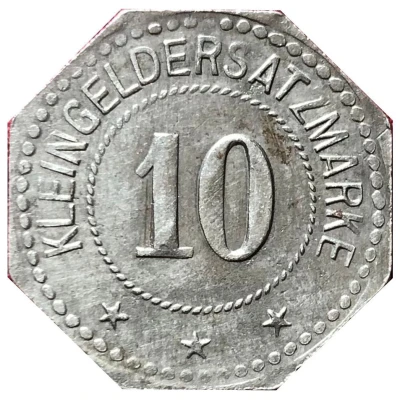

© Rhonan (CC BY-NC-SA)
10 Pfennigs - Coburg
1917 year| Iron | 2.6 g | 20.6 mm |
| Issuer | City of Coburg (Saxe-Coburg and Gotha) (Federal state of Saxe-Coburg and Gotha) |
|---|---|
| Emperor | William II (Wilhelm II) (1888-1918) |
| Type | Standard circulation coin |
| Year | 1917 |
| Value | 10 Pfennigs (10 Pfennige) (0.10) |
| Currency | Mark (1914-1924) |
| Composition | Iron |
| Weight | 2.6 g |
| Diameter | 20.6 mm |
| Thickness | 1.2 mm |
| Shape | Octagonal (8-sided) |
| Technique | Milled |
| Orientation | Medal alignment ↑↑ |
| Demonetized | Yes |
| Updated | 2024-10-04 |
| Numista | N#78455 |
|---|---|
| Rarity index | 76% |
Reverse
Pearl rim, legend circling pearl circle with denomination centered
Script: Latin
Lettering:
KLEINGELDERSATZMARKE
10
✭ ✭ ✭
Edge
Plain
Comment
Issuing authority: [Stadt, Sachsen-Coburg]FUNCK old ref.: 81.4
Interesting fact
One interesting fact about the 10 Pfennigs - Coburg 1917 coin is that it was issued during a time of great economic and political turmoil in Germany. The coin was minted in 1917, during the midst of World War I, and its iron composition was a result of the wartime efforts to conserve precious metals like gold and silver. The use of iron for coinage was a common practice during this period, as it was a readily available and affordable material. Despite the challenges of the time, the coin still maintains a certain level of historical and numismatic significance, making it an interesting piece for collectors and history enthusiasts.
